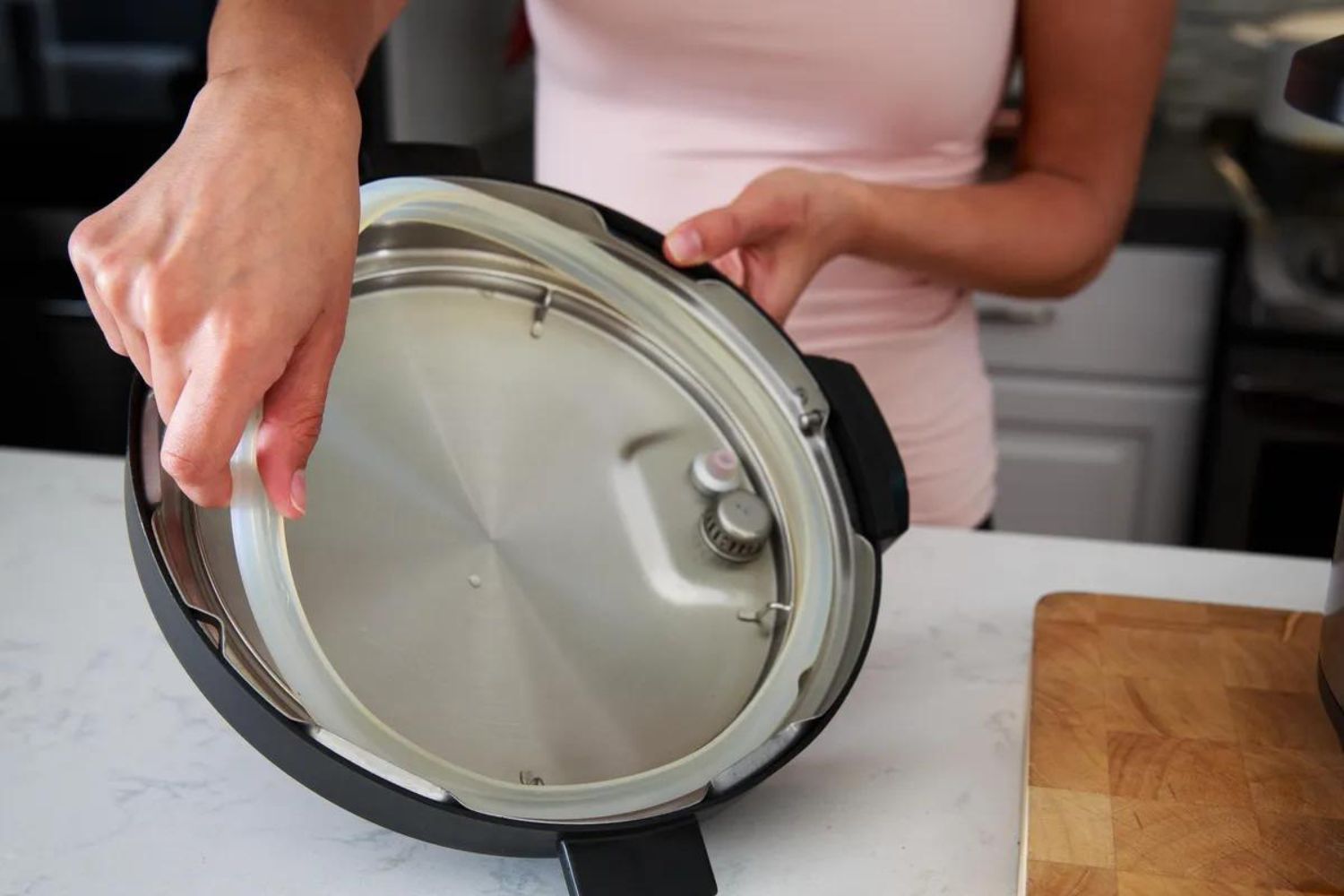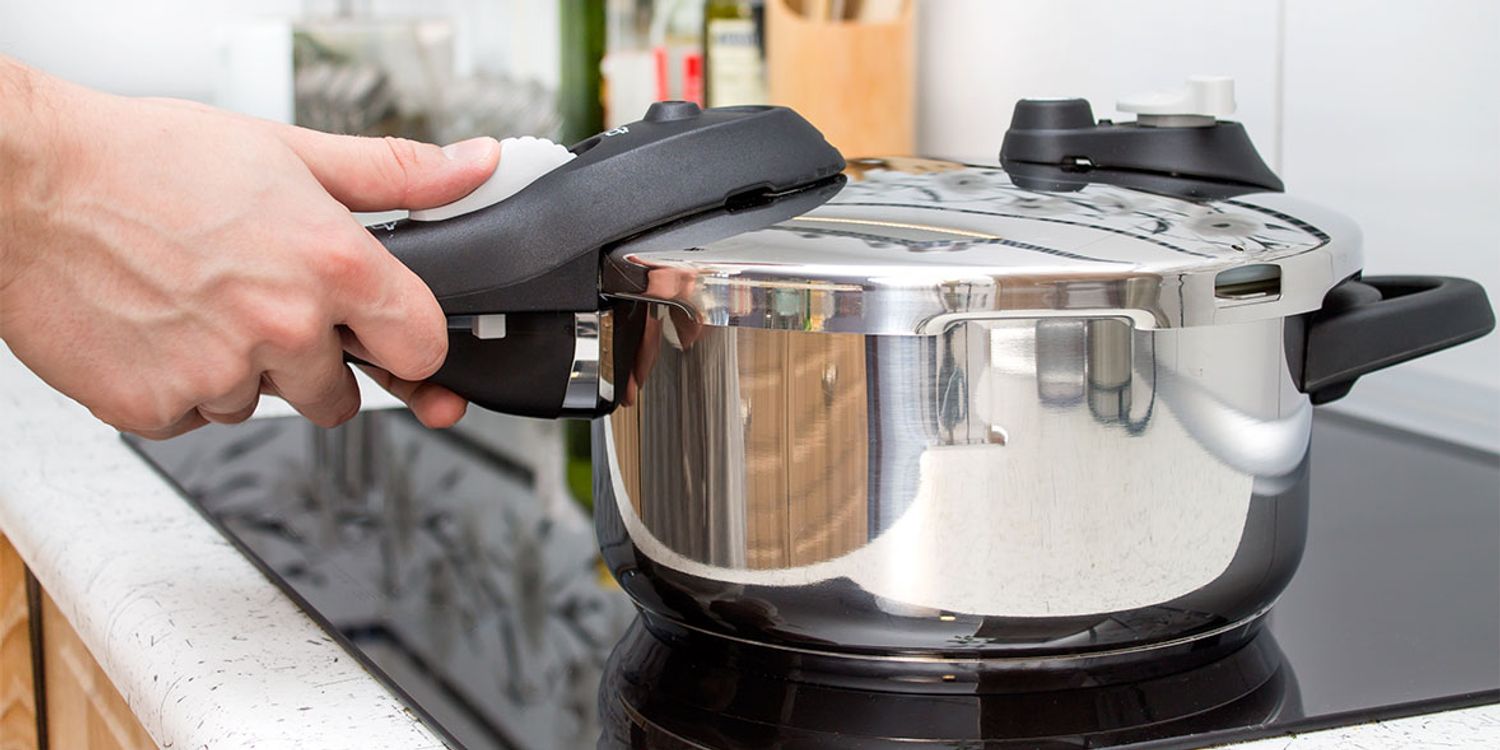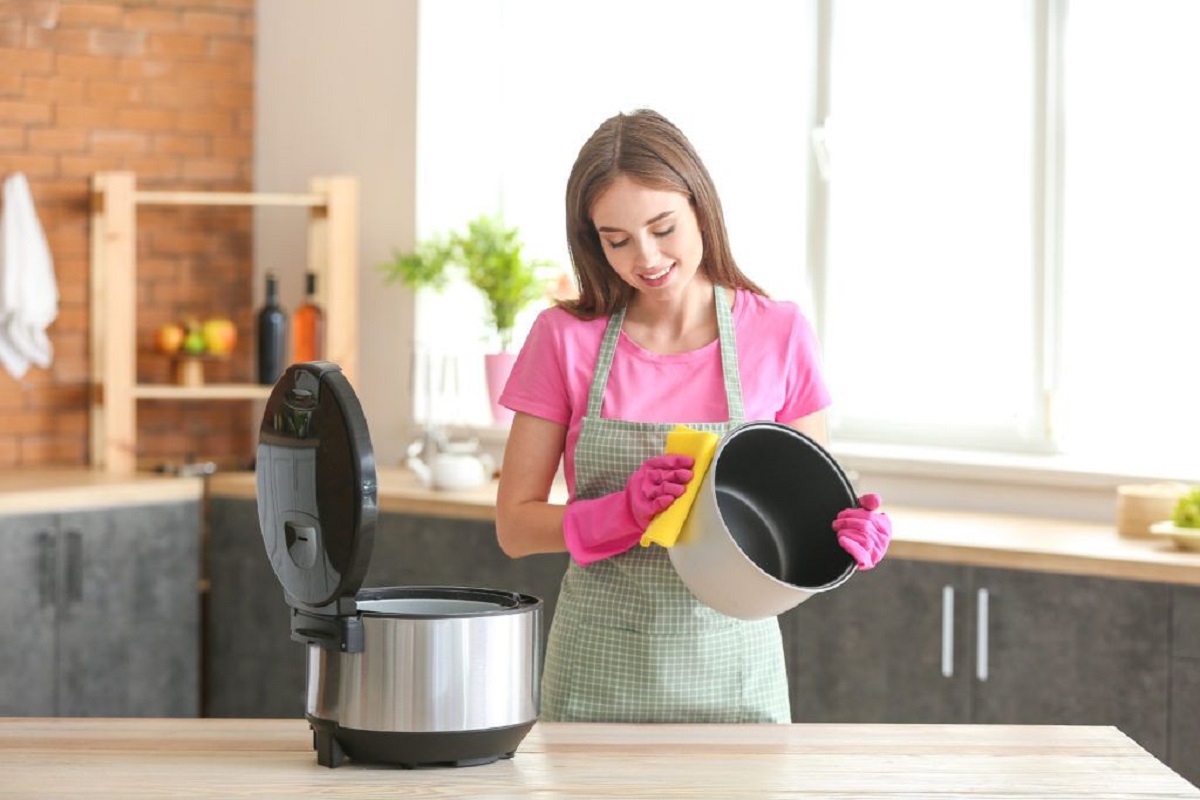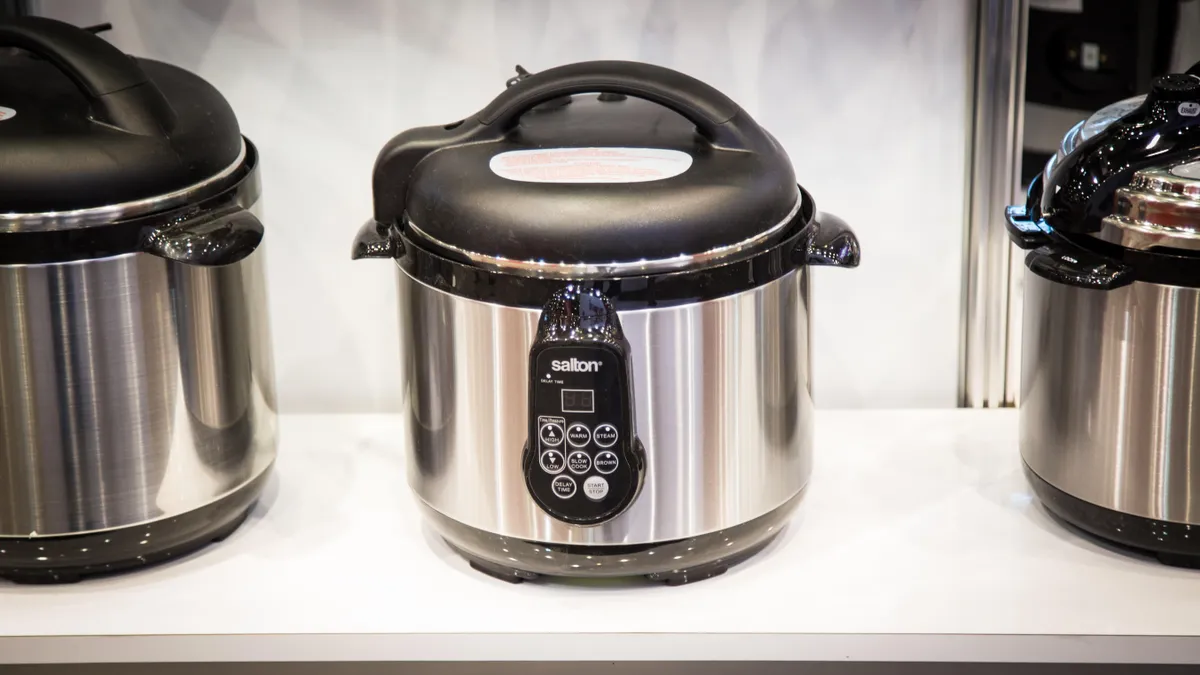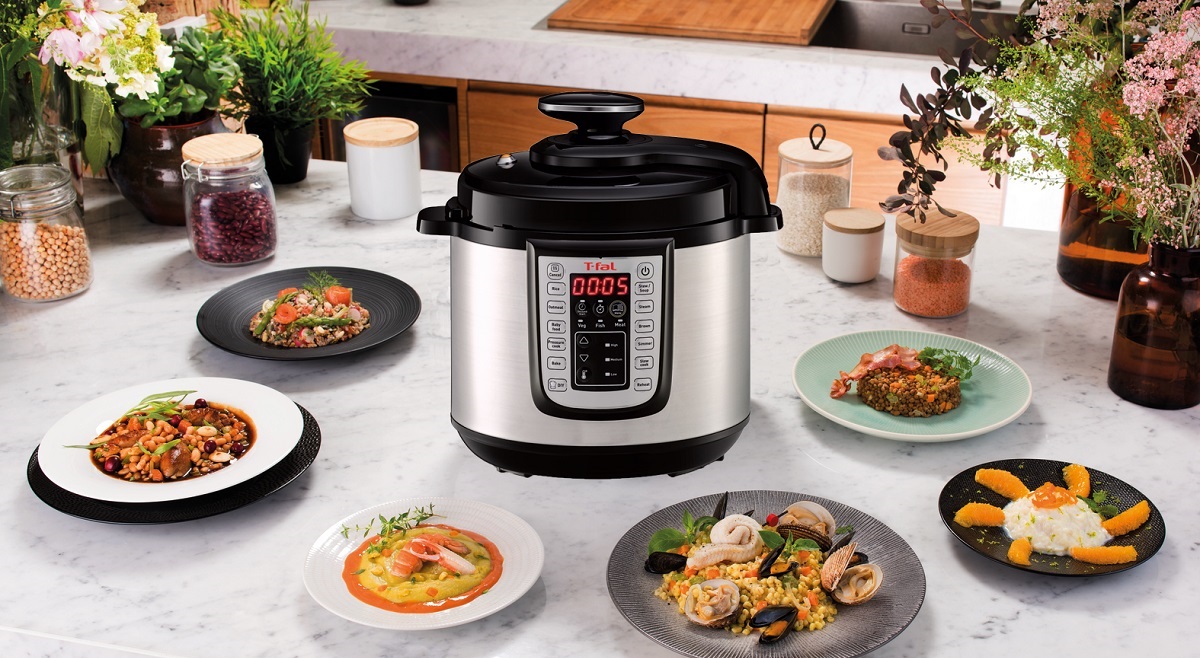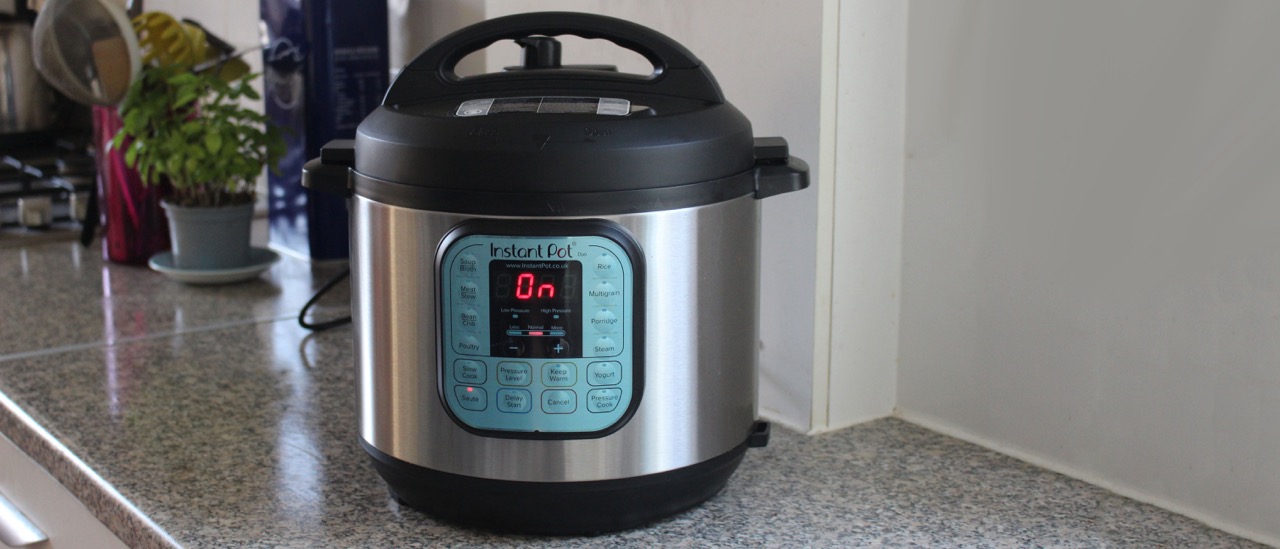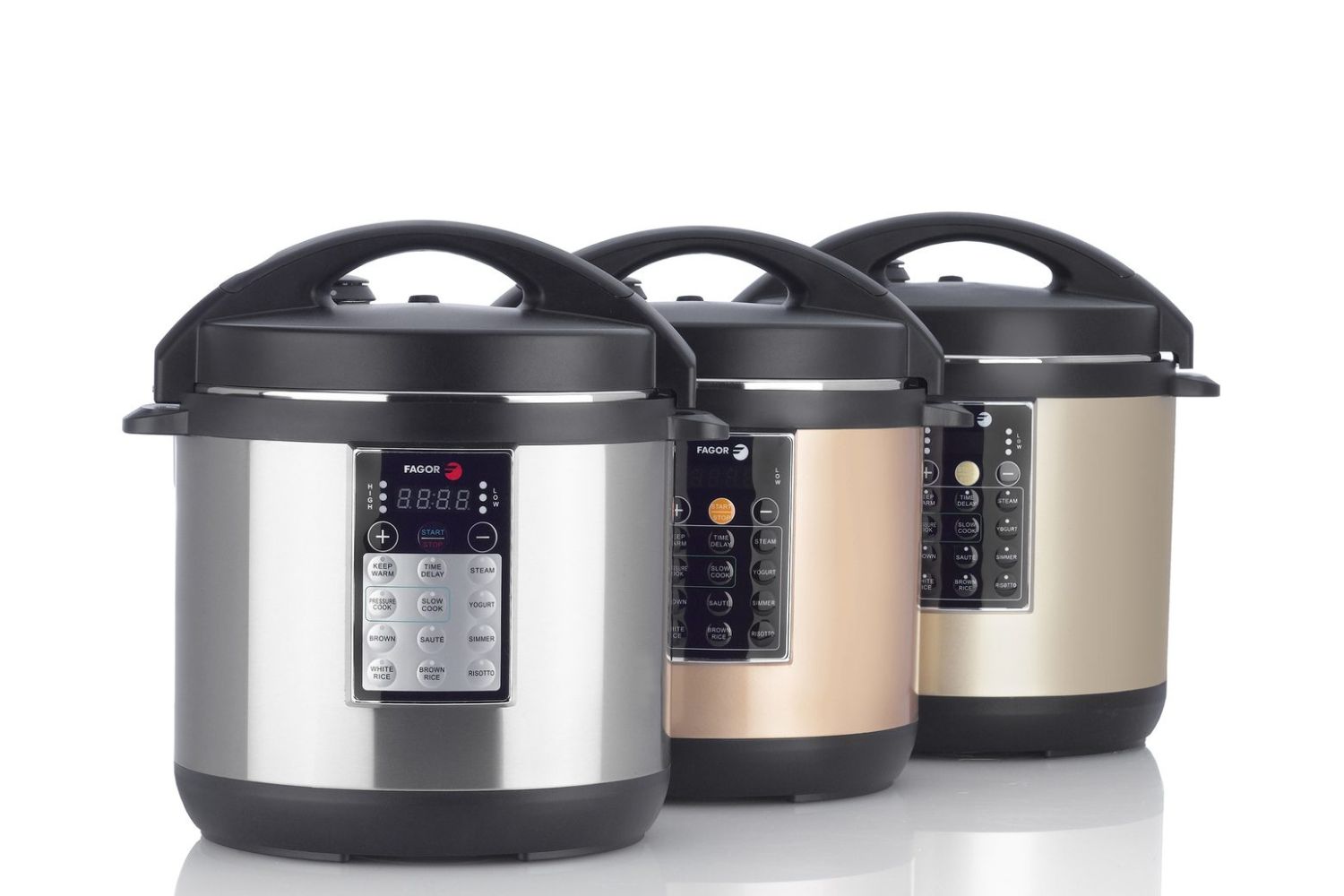Introduction
An electric pressure cooker is a versatile kitchen appliance that helps you cook meals faster and more efficiently. It harnesses steam pressure to create high temperatures, which reduces cooking time significantly. One of the essential parts of an electric pressure cooker is the lid, which plays a crucial role in trapping steam and maintaining pressure during cooking.
To ensure the smooth functioning of your electric pressure cooker, it is important to regularly clean and maintain the lid. Over time, the lid can accumulate residue, food particles, and mineral build-up, which can affect the cooker’s performance and compromise its safety. Cleaning the lid not only extends its lifespan but also helps prevent any contamination or flavor transfer to your future meals.
While the task of cleaning an electric pressure cooker lid may seem daunting, it is actually quite simple and requires only a few steps. In this guide, we will walk you through the process of cleaning an electric pressure cooker lid in a safe and effective manner.
Before we begin, it’s important to remember that safety should always be your top priority. Ensure that your electric pressure cooker is completely unplugged and cooled down before attempting to clean the lid. Taking proper safety precautions will prevent any accidental injuries or damage to the appliance.
Safety Precautions
Before starting the cleaning process, it is crucial to prioritize safety. Here are some important safety precautions to follow:
- Unplug the electric pressure cooker: Always make sure that the electric pressure cooker is unplugged from the power source before attempting to clean the lid. This eliminates the risk of electric shock.
- Allow the cooker to cool down: Give the cooker enough time to cool down before handling the lid. This prevents any burns or injuries caused by hot surfaces.
- Read the manufacturer’s instructions: Familiarize yourself with the specific cleaning instructions provided by the manufacturer. Different electric pressure cooker models may have slightly different cleaning requirements. Follow their guidelines to ensure the safety of the appliance.
- Use protective gloves: To protect your hands from hot surfaces or potentially harmful chemicals, it is advisable to wear heat-resistant gloves or latex gloves while cleaning the lid.
Remember, it is essential to follow these safety precautions to prevent any accidents or damage to yourself or the electric pressure cooker. With these precautions in mind, we can now proceed to clean the electric pressure cooker lid.
Step 1: Detach the Lid
The first step in cleaning an electric pressure cooker lid is to detach it from the main body of the cooker. This allows for easier access and thorough cleaning. Follow these simple steps to detach the lid:
- Unplug the electric pressure cooker: Ensure that the cooker is unplugged from the power source for safety.
- Allow the cooker to cool down: Give the cooker enough time to cool down before handling the lid. This prevents any burns or injuries caused by hot surfaces.
- Unlock and release the pressure: Most electric pressure cookers have a locking mechanism that keeps the lid secure during cooking. Make sure to release the pressure by turning the pressure release valve or following the manufacturer’s instructions.
- Lift the lid: Once the pressure is released, lift the lid carefully and set it aside on a clean and flat surface. Be cautious as the lid may still be warm.
- Inspect the lid: Take this opportunity to inspect the lid for any visible food particles or debris. This will help determine the level of cleaning required.
By detaching the lid, you can now move on to the next steps of cleaning the individual components for a thorough and effective cleaning process.
Step 2: Remove the Gasket
The gasket is a crucial part of the electric pressure cooker lid as it helps create a tight seal to maintain pressure during cooking. To ensure proper cleaning, it is important to remove the gasket. Follow these steps to safely remove the gasket:
- Gently pry the gasket: Locate the gasket, which is a flexible rubber or silicone ring, around the inner edge of the lid. Using your fingers or a small spoon, carefully pry the edge of the gasket to loosen it from its position.
- Lift the gasket: Once loosened, lift the gasket out of the lid by pulling it gently. Take extra care not to damage or tear the gasket during this process.
- Inspect the gasket: Now that the gasket is removed, inspect it for any signs of damage, such as cracks or wear. If you notice any issues, it is recommended to replace the gasket to ensure a proper seal.
By removing the gasket, you can thoroughly clean both the gasket and the lid separately, ensuring a hygienic and functional electric pressure cooker.
Step 3: Wash the Lid and Gasket
Now that you have removed the gasket, it is time to wash both the lid and the gasket to remove any residue or food particles. Follow these steps to clean them effectively:
- Prepare warm soapy water: Fill a sink or a basin with warm water and add a few drops of mild dish soap. Mix the soap until it creates a soapy solution.
- Submerge the lid and gasket: Place the electric pressure cooker lid and the gasket into the soapy water solution. Ensure that they are fully submerged for a thorough clean.
- Scrub gently: Using a soft sponge or a cloth, gently scrub the lid and the gasket, paying attention to any stubborn stains or residue. Avoid using abrasive or harsh cleaners as they can damage the lid and the gasket.
- Rinse with clean water: After scrubbing, rinse the lid and the gasket under running water to remove any soap residue.
By washing the lid and gasket, you ensure that they are free from any dirt or debris, maintaining a clean and hygienic electric pressure cooker.
Step 4: Remove Mineral Build-up
Over time, mineral deposits can accumulate on the electric pressure cooker lid, especially if you live in an area with hard water. These deposits can affect the performance of the cooker and hinder its ability to maintain pressure. To remove mineral build-up, follow these steps:
- Vinegar solution: Prepare a solution of equal parts white vinegar and water in a container large enough to submerge the lid.
- Submerge the lid: Place the lid in the vinegar solution and let it soak for about 30 minutes. The acidic properties of vinegar help dissolve mineral deposits.
- Scrub gently: After soaking, use a soft brush or cloth to gently scrub the lid, paying extra attention to areas with mineral build-up. Be careful not to apply too much pressure as it may damage the finish of the lid.
- Rinse thoroughly: Rinse the lid with clean water to remove any remaining vinegar residue.
By removing mineral build-up, you improve the performance and longevity of your electric pressure cooker lid, ensuring optimal cooking results.
Step 5: Rinse and Dry
After cleaning the electric pressure cooker lid, it is important to rinse it thoroughly to remove any remaining soap or cleaning solution. Follow these steps to rinse and dry the lid:
- Rinse under running water: Hold the lid under running water, ensuring that all surfaces are thoroughly rinsed. This will help eliminate any lingering soap residue.
- Check for cleanliness: Inspect the lid to ensure it is clean and free from any stains or debris. If necessary, repeat the cleaning process or target any specific areas that require additional attention.
- Dry with a clean cloth: Use a clean, dry cloth to gently wipe the lid and remove any excess moisture. Pay attention to the gasket and the nooks and crannies of the lid where water may have collected.
- Air-dry further: Once the lid is dry, you can leave it out to air-dry completely, ensuring that there is no moisture trapped before reassembling.
By rinsing and drying the lid properly, you prevent any potential mold or mildew growth, keeping your electric pressure cooker clean and hygienic for future use.
Step 6: Reassemble the Lid
Now that you have cleaned and dried the lid of your electric pressure cooker, it’s time to reassemble it properly. Follow these steps to ensure the lid is securely and correctly reassembled:
- Inspect the gasket: Before reassembling, check the gasket for any signs of damage. If needed, replace the gasket with a new one to ensure a proper seal.
- Align the gasket: Place the gasket back into the groove along the inner edge of the lid. Make sure it is properly aligned and fits snugly.
- Press down firmly: Once the gasket is in place, apply gentle pressure to ensure it is secured in the groove. Pay attention to any areas where the gasket may have slipped or come loose.
- Lock the lid: Depending on the model of your electric pressure cooker, follow the manufacturer’s instructions to lock the lid back onto the main body of the cooker. Ensure that it is properly locked in place to prevent any accidents during cooking.
By reassembling the lid correctly, you ensure a tight seal and proper functioning of your electric pressure cooker, allowing you to enjoy safe and efficient cooking.
Conclusion
Regularly cleaning your electric pressure cooker lid is essential for maintaining its performance and ensuring hygienic cooking. By following the steps outlined in this guide, you can effectively clean and maintain your electric pressure cooker lid:
- Start by detaching the lid from the main body of the cooker, ensuring the appliance is unplugged and cooled down.
- Remove the gasket carefully, inspecting it for any signs of damage.
- Wash both the lid and the gasket with warm soapy water, scrubbing gently to remove any residue.
- If there is mineral build-up, soak the lid in a vinegar solution to dissolve the deposits.
- Rinse the lid thoroughly to remove all cleaning solution residue.
- Dry the lid with a clean cloth, ensuring that it is completely free from moisture.
- Reassemble the lid by placing the gasket back into the groove and securing it firmly.
Taking the time to properly clean and maintain your electric pressure cooker lid will not only extend its lifespan but also ensure better cooking results and a safe cooking environment. By following these steps regularly, you can enjoy delicious meals with peace of mind, knowing that your electric pressure cooker is in optimal condition.
Remember to always consult the manufacturer’s instructions for specific cleaning recommendations and safety precautions. With proper care, your electric pressure cooker lid will continue to serve you well for many meals to come.







